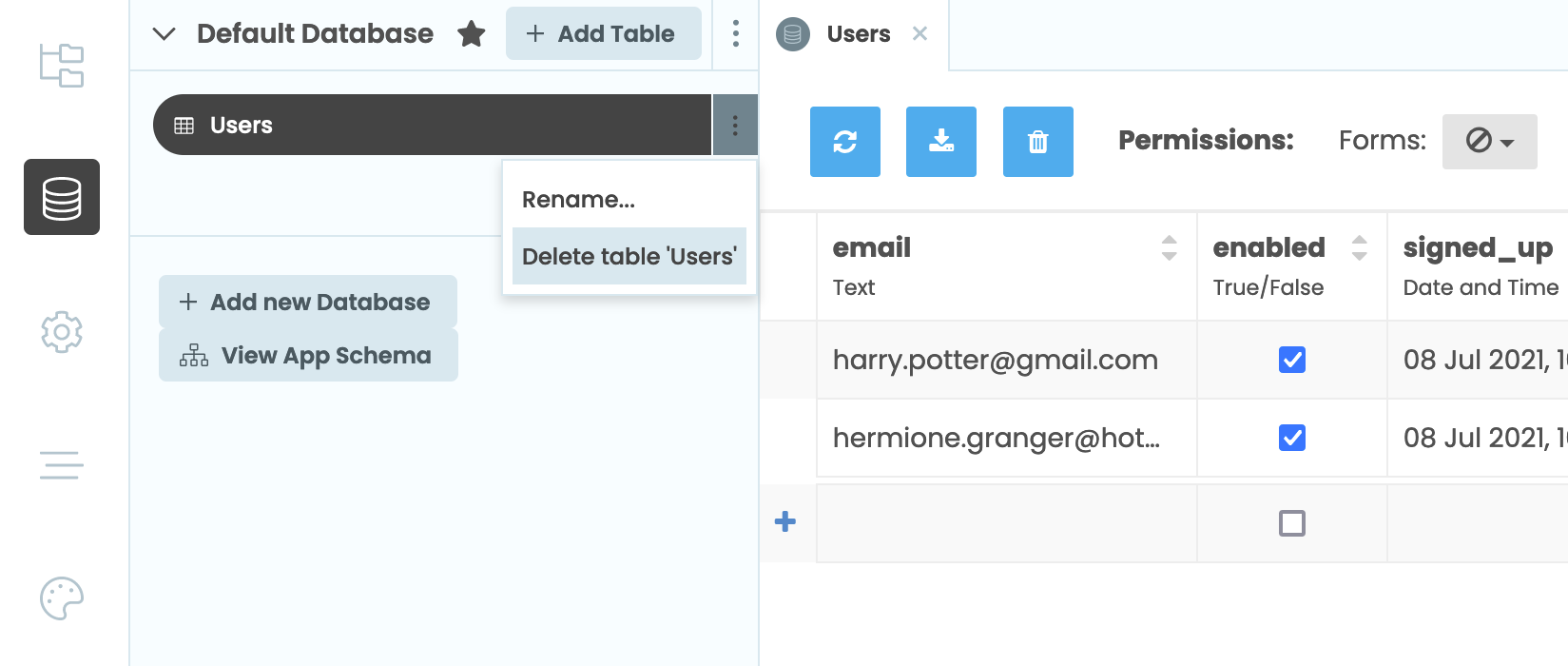The Users Table

The table of users is created for you automatically when you configure the Users service. Many of the columns are automatically added at the moment they’re first needed.
You don’t have to use this table, you can use any table you like. Just delete the auto-generated table from your apps default database:

and you’ll see this message at the bottom of the Users Service:

Click ‘Choose existing table’ to select a different table from this app or from any of your other apps.
Single Sign-On between apps
To share users between apps, use the Users table from another app. By sharing one Users table between many apps, you can provide single-sign-on for all your apps simultaneously.
Users Table Columns
The following columns will be automatically added to the Users table. Feel free to use or manipulate them yourself, or add more:
email- The user’s email addressenabled- A boolean value indicating whether this user is allowed to log in. Uncheck to lock an account.last_login- The date and time when this user most recently logged inpassword_hash- A bcrypt hash of the user’s password (password-based authentication only)n_password_failures- The number of consecutive times a user has failed to login due to using an incorrect password. Resets back to 0 upon a successful login.confirmed_email- A boolean value indicating whether this user has confirmed their email address (password-based authentication only; only if email confirmation is enabled)signed_up- The date and time when this user registeredconfirmation_key- A secret value used in the confirmation and password-reset links (password-based authentication only)
Add columns to your Users table to store extra information about a user. It’s very common to add a role
column to store user roles (e.g. “is this user an administrator?”).
Case Sensitivity
When a user signs up for your app with any of the built-in sign-up functions (e.g. signup_with_email()), their email is lowercased before being stored in the Users table. When a user logs in, the Users table is searched for the exact email address entered and its lowercase equivalent. For example, if a user logins in with Customer@example.com, this will match both Customer@example.com and customer@example.com.
If you are manually entering log-in information into a Users table, you should lowercase the login emails. This way, all logins will be case-insensitive.
Do you still have questions?
Our Community Forum is full of helpful information and Anvil experts.
